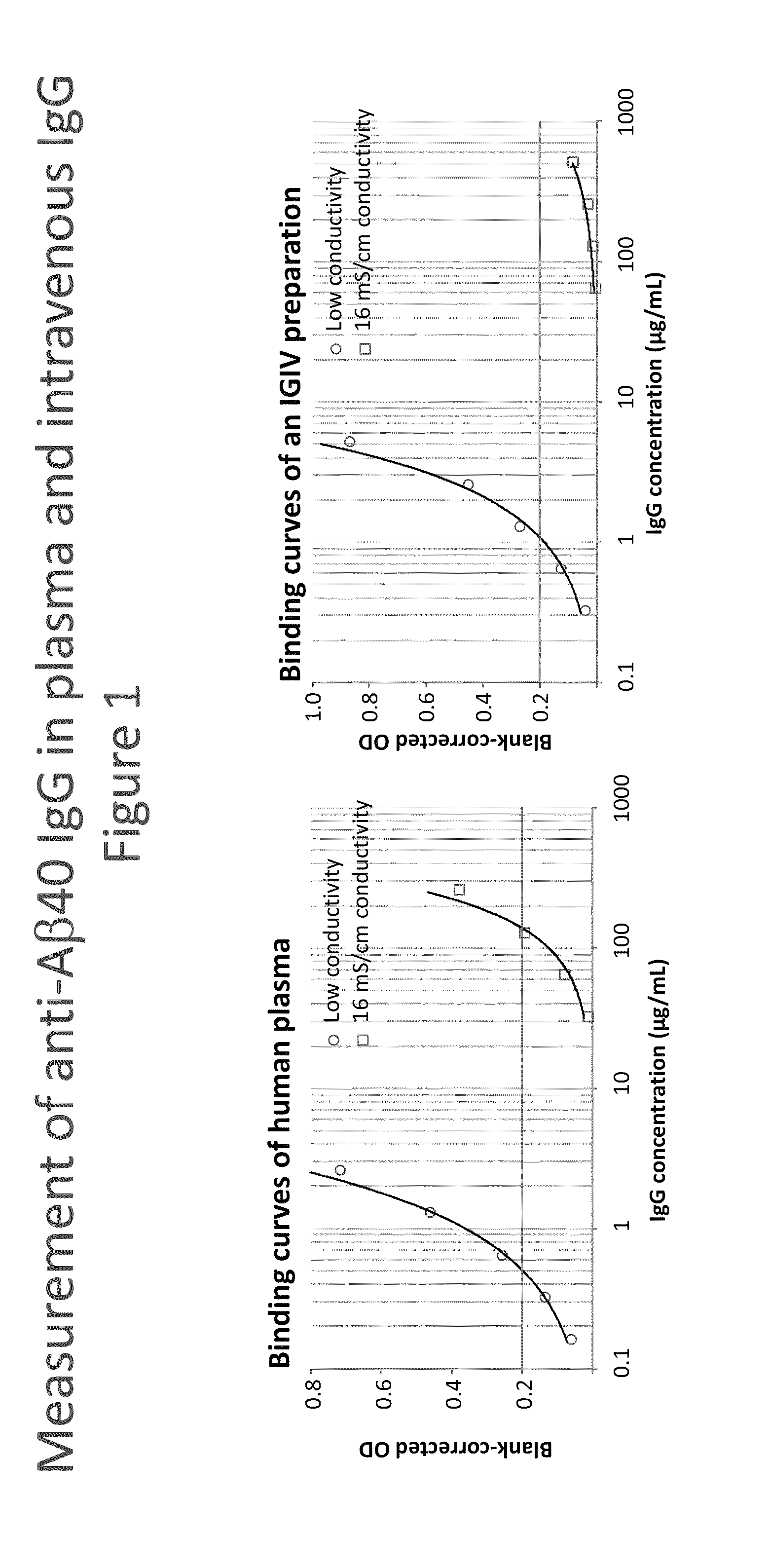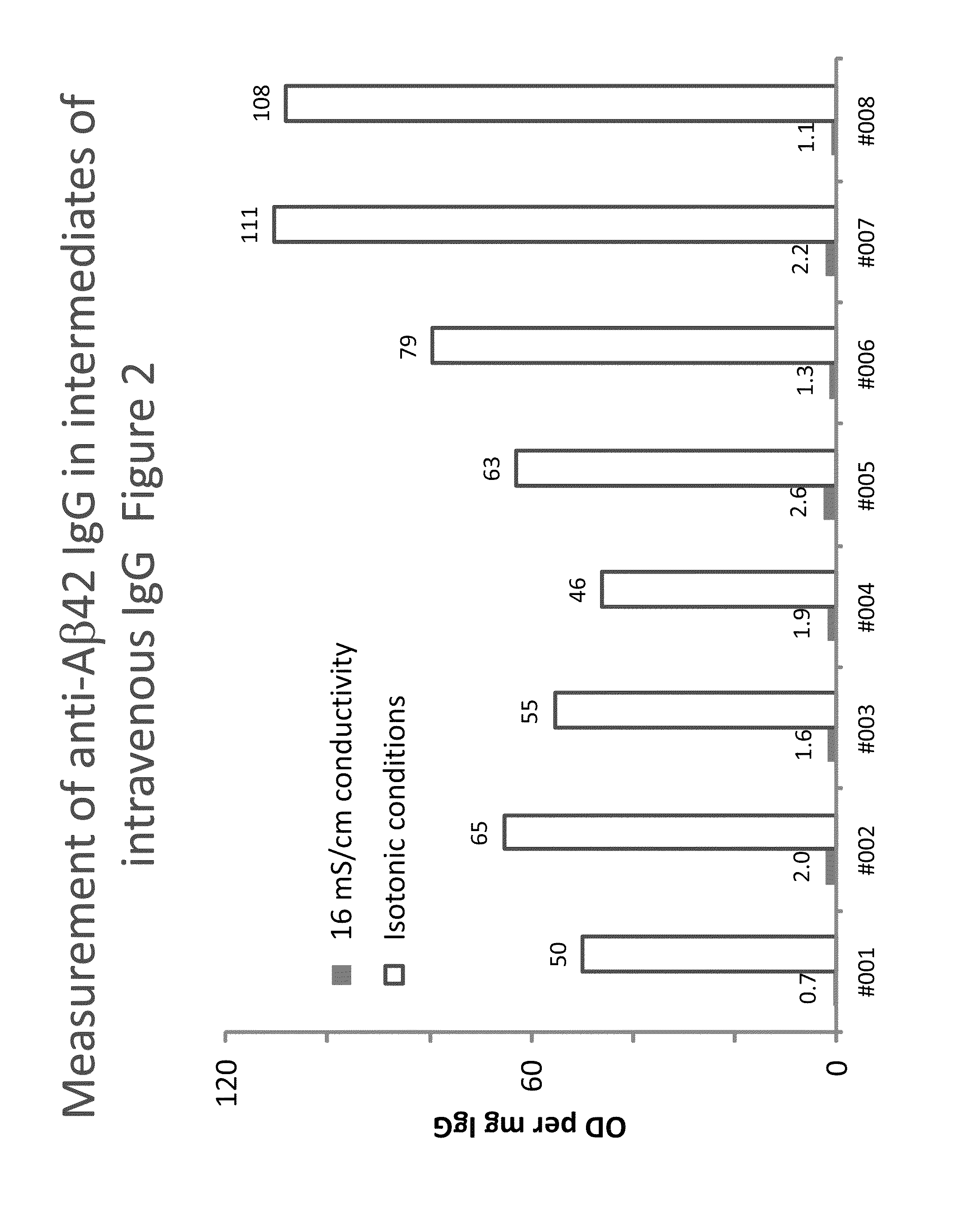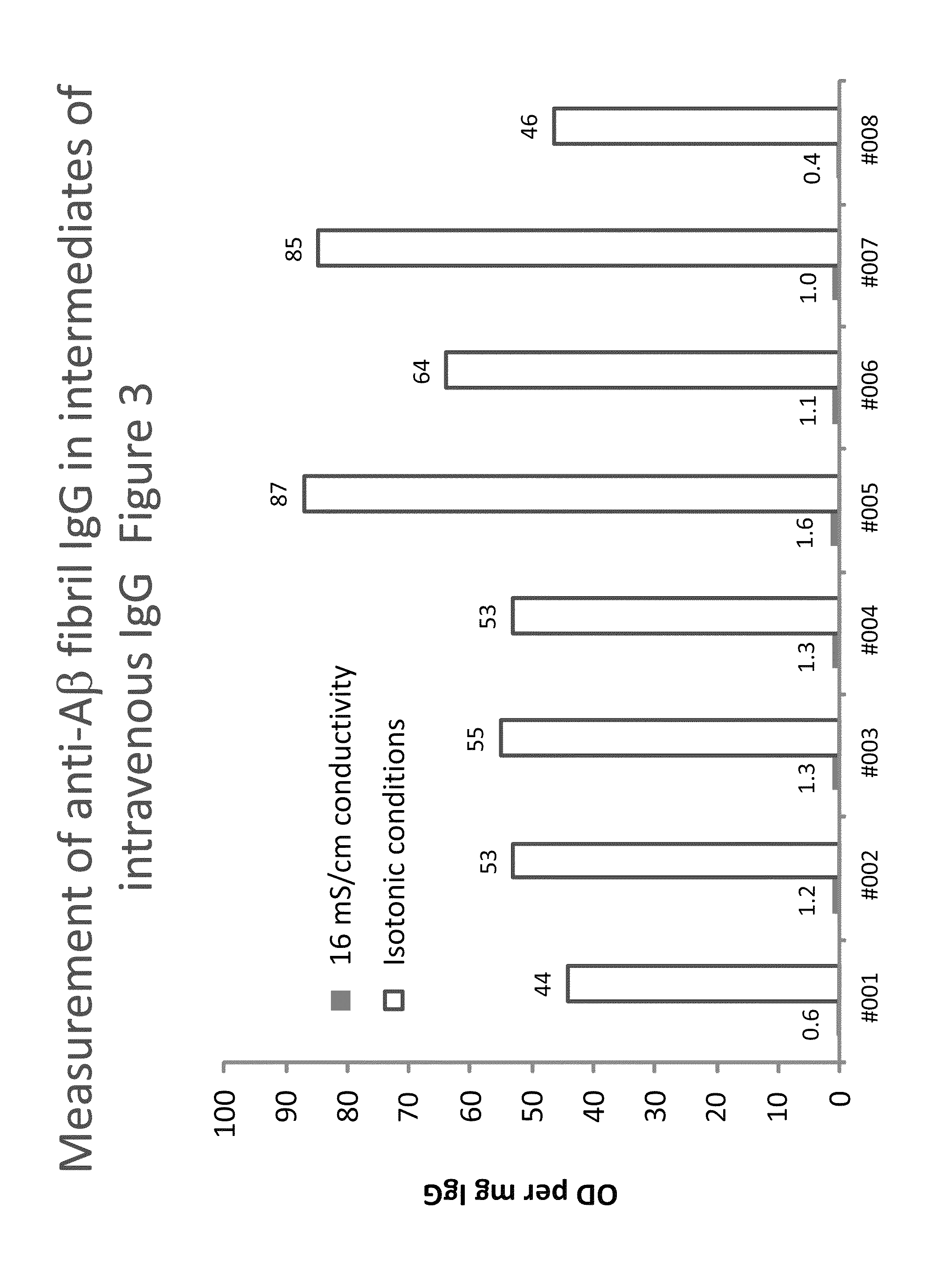Measurement of autoantibodies at low conductivity with increased sensitivity
a low conductivity, autoantibodies technology, applied in the direction of instruments, biochemistry apparatus and processes, material analysis, etc., can solve the problems of low avidity of dsdna/anti-dsdna antibody complexes, limits the detection of autoantibodies with relatively high avidity, and only as useful as the quality of the data they produce, so as to achieve enhanced sensitivity, less constraints on detection thresholds, and low conductivity
- Summary
- Abstract
- Description
- Claims
- Application Information
AI Technical Summary
Benefits of technology
Problems solved by technology
Method used
Image
Examples
example 1
Measurement of Anti-Amyloid(1-40) (Aβ40) IgG in Plasma and in an Intravenous IgG Preparation (IVIG)
[0156]Synthetic human Aβ40 peptide (Calbiochem) was dissolved at 1 mg / mL in trifluoroacetic acid and diluted to 10 μg / mL with 0.1 M NaHCO3—Na2CO3 buffer, pH 9.5. This solution was incubated with the wells of a NUNC Maxisorp F96 plate at 4° C. overnight (100 μL / well). The plate was then washed with washing buffer having 16 mS / cm conductivity or low conductivity concentration of NaCl. In both cases the washing buffer was 20 mM HEPES, 2 mM CaCl2, 0.1% Tween 20 containing 0 (WBs) or 150 mM NaCl (WBi). The samples, a human reference plasma preparation #1R92 and an intravenous IVIG preparation (Gammagard Liquid, #LE12G036), were diluted using the respective washing buffer after addition of 10 mg / mL human serum albumin (hSA). These dilutions buffers were also used for blocking the plate, which was achieved by incubation at room temperature (RT) for 2 h. Then the plate was washed and afterward...
example 2
Measurement of anti Aβ42 IgG in intermediates of IVIG
[0158]Eight lots of a process intermediate from the IVIG manufacturing process with a purity of higher than 85% were investigated for their anti-Aβ42 IgG levels using the methods described in Example 1. In contrast to the buffers described the buffers used did not contain CaCl2. FIG. 2 shows the anti-Aβ42 IgG levels measured, expressed as blank-corrected OD per mg of IgG.
[0159]In all cases, the low conductivity conditions resulted in clearly increased signals. The assay signal obtained under low conductivity conditions was on average 50-times higher than that obtained under 16 mS / cm conditions. Individual increases ranged from 24 to 102 times. Concomitantly, the ratio between the signals on Aβ-coated and blank wells decrease by more than 50% on average and we found mean ratios of 0.13 and 0.04 for the 16 mS / cm or low conductivity conditions.
example 3
Measurement of anti Aβ40 oligomer (CAPS) IgG in intermediates of IVIG
[0160]Plates were coated with anti-Aβ40 oligomers (CAPS, cross-linked β-amyloid protein species), obtained as described (O'Nuallain B. et al., (2010): J Clin Immunol May; 30 Suppl 1:537-42). The assay was then done as described in Example 1 using buffers without CaCl2. Eight lots of a process intermediate from the IVIG manufacturing process with a purity of higher than 85% were investigated for their anti-CAPS IgG levels. Table 2 shows the results giving the IgG concentrations (in μg / mL) and the corresponding signals obtained on the CAPS-coated (OD) and the blank wells (Blank). In addition, the ratio (Ratio) and the difference (Δ) between the corresponding signals and the signal normalized to the protein concentration, expressed as OD / mg are given:
[0161]
TABLE 2Measurement of anti-CAPS IgGSampleIgG (μg / mL)ODBlankRatioΔODOD / mg16 mS / cm conditions#0016541.1070.0750.071.0331.58#0024211.0860.0950.090.9912.36#0035951.4180...
PUM
| Property | Measurement | Unit |
|---|---|---|
| concentrations | aaaaa | aaaaa |
| conductivity | aaaaa | aaaaa |
| ionic strengths | aaaaa | aaaaa |
Abstract
Description
Claims
Application Information
 Login to View More
Login to View More - R&D
- Intellectual Property
- Life Sciences
- Materials
- Tech Scout
- Unparalleled Data Quality
- Higher Quality Content
- 60% Fewer Hallucinations
Browse by: Latest US Patents, China's latest patents, Technical Efficacy Thesaurus, Application Domain, Technology Topic, Popular Technical Reports.
© 2025 PatSnap. All rights reserved.Legal|Privacy policy|Modern Slavery Act Transparency Statement|Sitemap|About US| Contact US: help@patsnap.com



